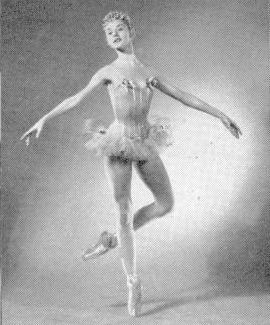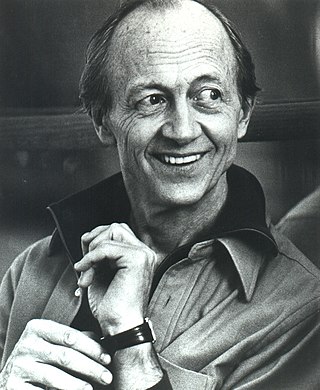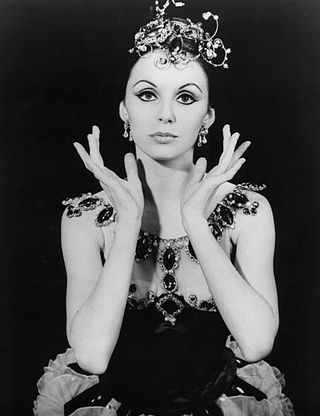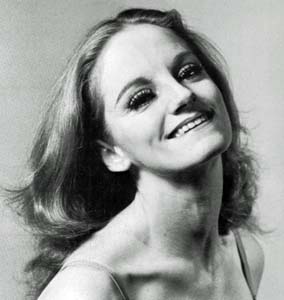Related Research Articles

George Balanchine was an American ballet choreographer of Georgian origin, recognized as one of the most influential choreographers of the 20th-century. Styled as the father of American ballet, he co-founded the New York City Ballet and remained its artistic director for more than 35 years. His choreography is characterized by plotless ballets with minimal costume and décor, performed to classical and neoclassical music.

New York City Ballet (NYCB) is a ballet company founded in 1948 by choreographer George Balanchine and Lincoln Kirstein. Balanchine and Jerome Robbins are considered the founding choreographers of the company. Léon Barzin was the company's first music director. City Ballet grew out of earlier troupes: the Producing Company of the School of American Ballet, 1934; the American Ballet, 1935, and Ballet Caravan, 1936, which merged into American Ballet Caravan, 1941; and directly from the Ballet Society, 1946.

Jerome Robbins was an American dancer, choreographer, film director, theatre director and producer who worked in classical ballet, on stage, film, and television.
Gelsey Kirkland is an American ballerina. She received early ballet training at the School of American Ballet. Kirkland joined the New York City Ballet in 1968 at age 15, at the invitation of George Balanchine. She was promoted to soloist in 1969, and principal in 1972. She went on to create leading roles in many of the great twentieth century ballets by Balanchine, Jerome Robbins, and Antony Tudor, including Balanchine's revival of The Firebird, Robbins' Goldberg Variations, and Tudor's The Leaves are Fading.

Tanaquil Le Clercq was an American ballet dancer, born in Paris, France, who became a principal dancer with the New York City Ballet at the age of nineteen. Her dancing career ended abruptly when she was stricken with polio in Copenhagen during the company's European tour in 1956. Eventually regaining most of the use of her arms and torso, she remained paralyzed from the waist down for the rest of her life.
Ruth A. Sobotka was an Austrian-born American dancer, costume designer, art director, painter, and actress.

Todd Bolender was a renowned ballet dancer, teacher, choreographer, and director. He was an instrumental figure in the creation and dissemination of classical dance and ballet as an American art form. A child of the American Midwest during the Great Depression, he studied under George Balanchine and led the Kansas City Ballet in Kansas City, Missouri, from 1980 to 1995.

Nicholas Magallanes was a Mexican-born American principal dancer and charter member of the New York City Ballet. Along with Francisco Moncion, Maria Tallchief, and Tanaquil Le Clercq, Magallanes was among the core group of dancers with which George Balanchine and Lincoln Kirstein formed Ballet Society, the immediate predecessor of the New York City Ballet.
Symphony in C, originally titled Le Palais de Cristal, is a ballet choreographed by George Balanchine, to Georges Bizet's Symphony in C. The ballet was originally created for the Paris Opera Ballet, and premiered on July 28, 1947 at Théâtre National de l'Opéra.

Afternoon of a Faun is a neoclassical ballet choreographed by Jerome Robbins to Claude Debussy's Prélude à l'après-midi d'un faune. The ballet features two young dancers meeting at a rehearsal studio. Robbins was influenced by Stéphane Mallarmé's poem L'après-midi d'un faune, the inspiration for Debussy's score, as well as Vaslav Nijinsky's 1912 ballet to the same score, and his own observation of dancers.

Patricia McBride is a ballerina who spent nearly 30 years dancing with the New York City Ballet. McBride joined the New York City Ballet in 1959. She became a principal in 1961, becoming the company's youngest principal. She danced with the company for 30 years, including roles created for her by choreographers George Balanchine and Jerome Robbins.
Circus Polka: For a Young Elephant was written by Igor Stravinsky in 1942. He composed it for a ballet production that the choreographer George Balanchine did for Ringling Bros. and Barnum & Bailey Circus. The ballet was performed by fifty elephants and fifty ballerinas. In 1944, Stravinsky published an orchestration of the piece, which is now part of the repertoire of many orchestras.
Barbara Anne Milberg Fisher was an American academic and professional dancer. She was professor emerita of English at the City College of the City University of New York (CUNY), where she taught for 29 years. She published several works, including on the life of Wallace Stevens. Prior to her academic career, under her maiden name, Barbara Milberg, she danced with the short-lived Ballet Society, founded by George Balanchine and Lincoln Kirstein; became soloist with the New York City Ballet (NYCB) in its first decade; and then joined Jerome Robbins's newly formed Ballets: USA, touring Europe and the States with that company as a principal dancer.
In G Major is a ballet choreographed by Jerome Robbins to Maurice Ravel's Piano Concerto in G Major. Performed by a cast of fourteen, the ballet featured Broadway-inspired choreography. The ballet was created for the New York City Ballet's Ravel Festival, which celebrated the centenary of Ravel, and premiered on May 15, 1975, at the New York State Theater, with Suzanne Farrell and Peter Martins originating the two lead roles.
Yvonne Mounsey was a South African-American ballet dancer and teacher. Described as "a dancer of glamour, wit, and striking presence," she spent ten years with the New York City Ballet (1949–1959), where she created important roles in the works of George Balanchine and Jerome Robbins.
Michael Maule was an American ballet dancer and instructor.

Sally Harrington, known professionally as Sara Leland, was an American ballet dancer and répétiteur. She started her career with the Joffrey Ballet in 1959, and was recruited to join the New York City Ballet by George Balanchine in 1960. She was promoted to principal dancer in 1972, and created roles for both Balanchine and Jerome Robbins.

Francisco Moncion was a charter member of the New York City Ballet. Over the course of his long career, spanning some forty years, he created roles in major works by George Balanchine, Jerome Robbins, and others. He was also a choreographer himself and a talented amateur painter.
La Valse is a ballet choreographed by George Balanchine to Maurice Ravel's Valses Nobles et Sentimentales and La Valse. It premiered on February 20, 1951, at the City Center of Music and Drama, performed by the New York City Ballet. The ballet depicts dancers waltzing in a ballroom, during which a woman becomes attracted to a figure of death, and ultimately dies.
Divertimento No. 15 is a ballet choreographed by George Balanchine to Mozart's eponymous music. The ballet was made for the New York City Ballet. Balanchine first choreographed the score in 1952, for a ballet titled Caracole. In 1956, he planned to revive Caracole for a celebration of Mozart's bicentenary but made a new ballet to the same music instead. Divertimento No. 15 premiered on May 31, 1956, at the American Shakespeare Theatre, Stratford, Connecticut.
References
- 1 2 3 4 5 6 Reynolds, Nancy (1977). Repertory in Review: 40 Years of the New York City Ballet. pp. 122–125. ISBN 9780803773684.
- 1 2 3 4 5 6 7 Jowitt, Deborah (2004). Jerome Robbins: His Life, His Theater, His Dance. ISBN 9780684869858.
- 1 2 3 4 5 6 7 8 9 10 11 12 Vaill, Amanda (May 6, 2008). Somewhere: The Life of Jerome Robbins. ISBN 9780767929295.
- 1 2 3 Lawrence, Greg (May 7, 2001). Dance with Demons: The Life Jerome Robbins. ISBN 9781101204061.
- ↑ Martin, Clive (June 10, 1951). "The Dance: Novelties; City Ballet Offers Works By Boris and Robbins Robbins and Kaye". New York Times.
- 1 2 Craine, Debra; Mackrell, Judith (August 19, 2010). The Oxford Dictionary of Dance. p. 84. ISBN 978-0199563449.
- ↑ Parry, Jann (April 16, 2018). "English National Ballet – Voices of America bill – works by Forsythe, Robbins & Barton – London". DanceTabs.
- ↑ Martin, John (June 15, 1951). "Ballet by Robbins in Local Premiere; City Troupe Excels in 'Cage,' With Nora Kaye in Lead-- Choreographer Lauded". New York Times.
- ↑ "Live From Studio 8H: An Evening Of Jerome Robbins' Ballets With Members of the New York City Ballet (TV)". Paley Center For Media. Retrieved March 23, 2022.